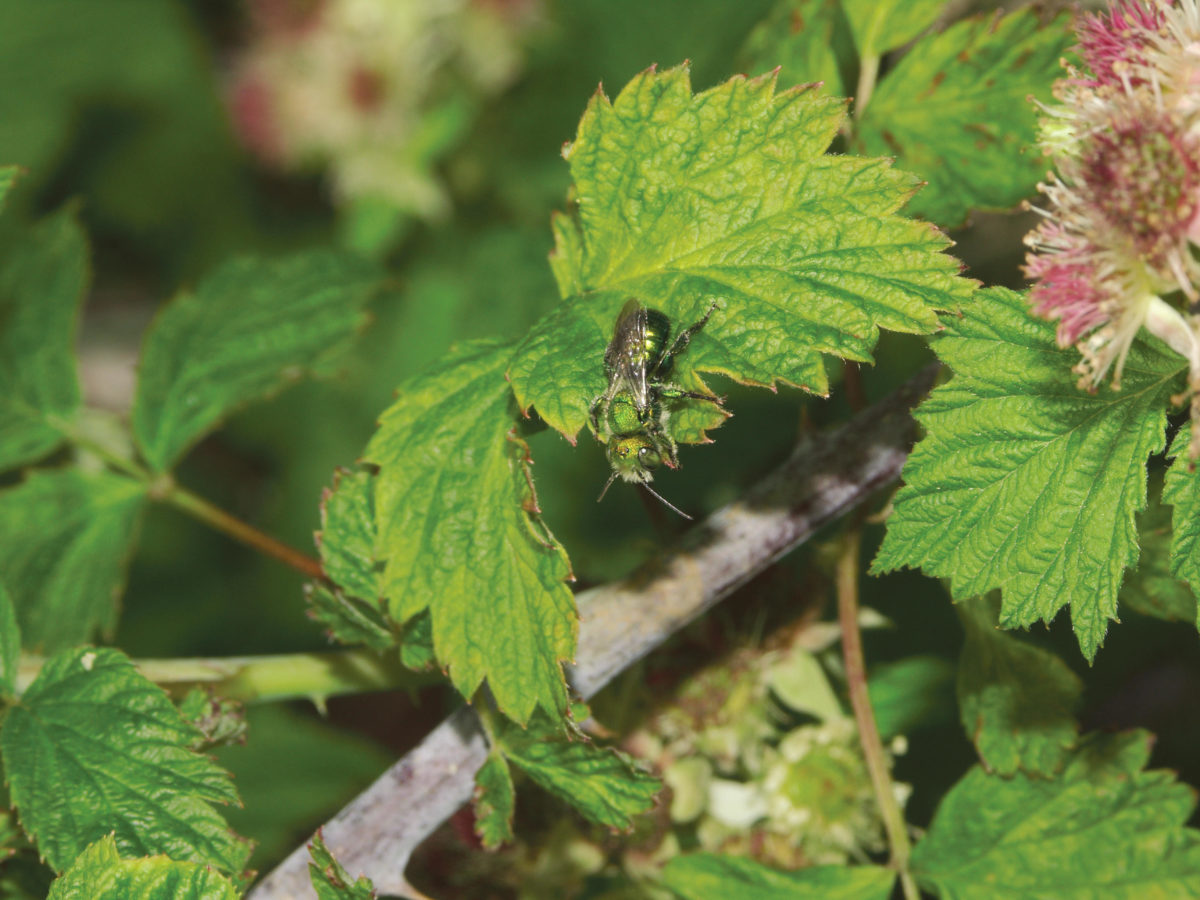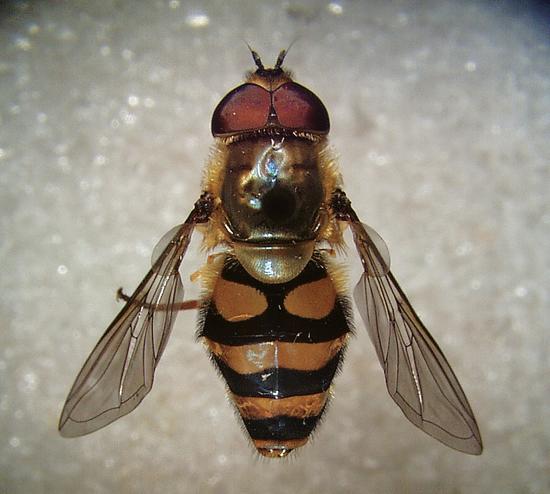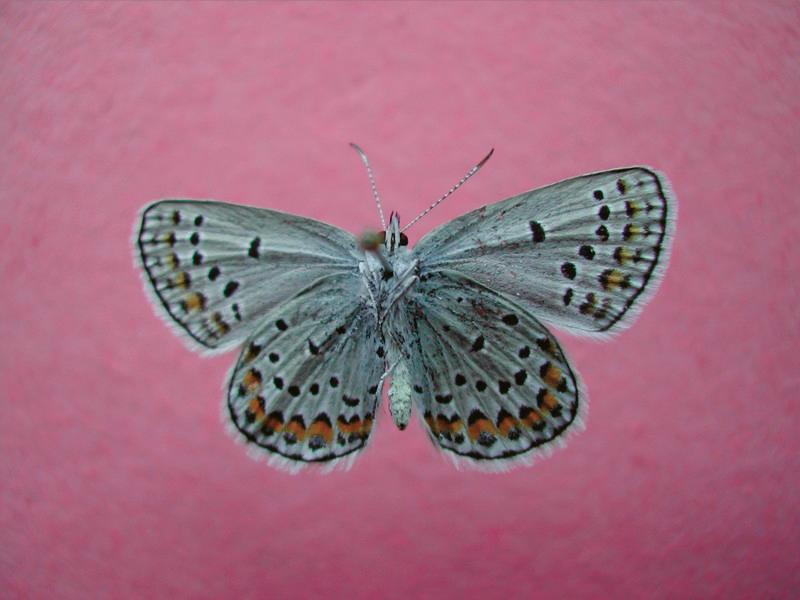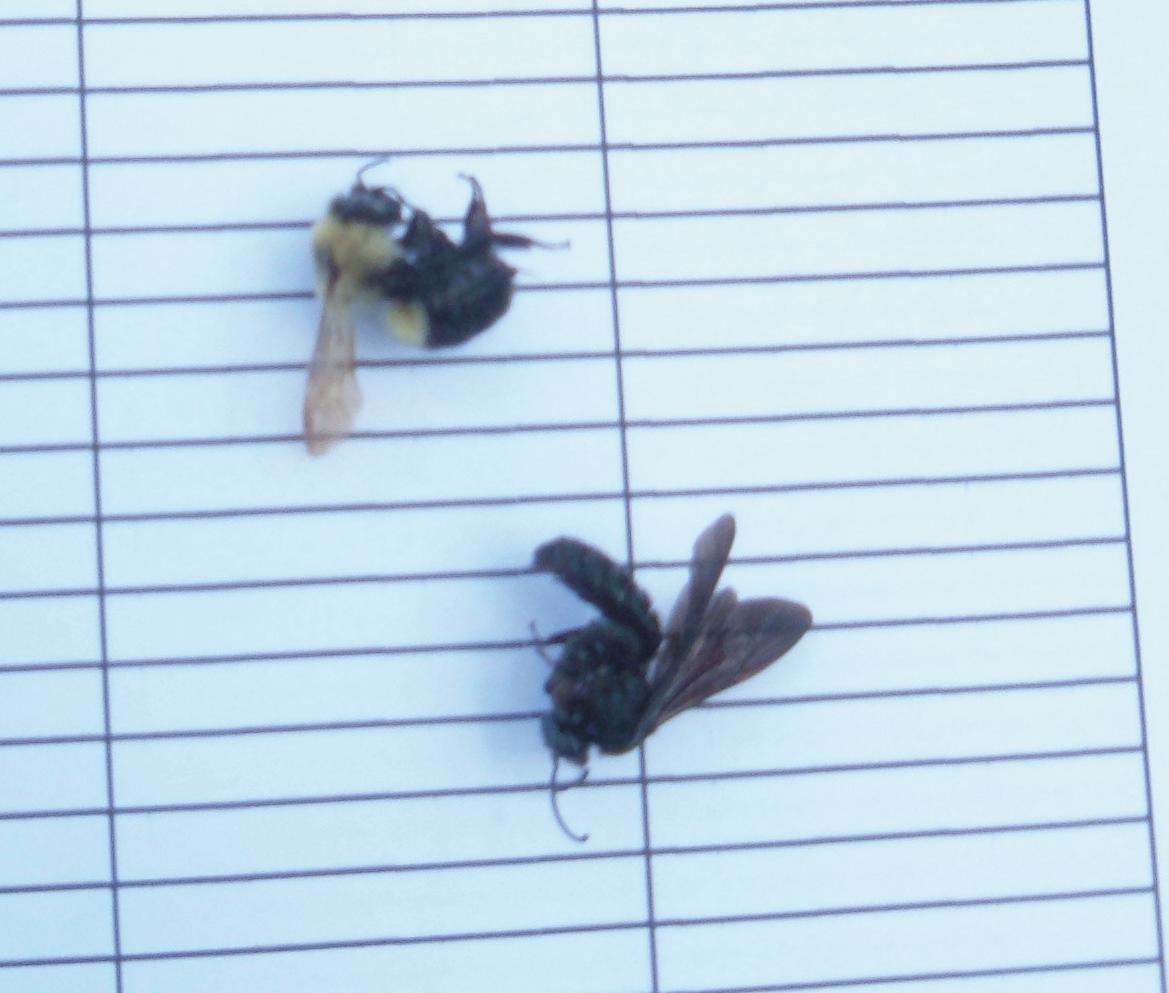Eric Mader, Pollinator Outreach Coordinator, the Xerces Society for Invertebrate Conservation

North America has around 4,000 native bee species. And while bees are arguably the most important group of animal pollinators, they are not the only ones. Countless wasps, butterflies, moths, flies, beetles, hummingbirds, and even bats contribute to the pollination of various plants. Around the world, even more unusual examples of animal pollinators exist, including mosquitoes, slugs, rainforest lizards, an Australian possum, and even lemurs on the island of Madagascar.
In addition to pollinating flowers, these creatures play a critical role in the larger ecosystem. Wasps and syrphid fly larvae for example prey upon plant pests like aphids and locusts (Figure 10.2). Pollinator insects like bees are food for larger animals such as birds and amphibians. The seeds and fruit pollinated by insects feed countless larger animals like rodents and bears. And some plants are dependent on specific pollinators for reproduction—such as bottle gentian (Gentiana andrewsii) by bumble bees and cardinal flower (Lobelia cardinalis) by hummingbirds.

Protecting these wild pollinators is expensive, but not protecting them costs much more. Many of our own food, fiber, and medicinal plants are entirely dependent on insects for pollination.
Against the backdrop of our rising dependence on insect pollination is a critical decline in the numbers and diversity of wild pollinators. Habitat loss and fragmentation has pushed our native pollinators to the margins of human civilization. Vast areas of wild lupine, once common in the Great Lakes region, have been lost to urbanization. The Karner Blue butterfly (Figure 10.3) has nearly been lost because it depends on lupine during its caterpillar stage. Various other butterflies, once common to North America, are already extinct.

Similarly natural habitats that remain are often degraded. Invasive plant species displace entire ecosystems. Invasive insects attack or displace native ones. And exotic diseases can cause total extinction. In the 1990s European insectaries began rearing American bumble bees for shipment to greenhouse growers in California. Some of these captive bees escaped the California greenhouses. Along with them, it appears that a European strain of Nosema bombi, a microsporidian disease endemic to European bumble bees, also escaped. Franklin’s bumble bee, once native to the mountains of southern Oregon and northern California, is now believed to be extinct after wild colonies came into contact with the disease. Other once-common bumble bee species including the western (Bombus occidentalis), rusty patch (Bombus affinis), and yellow-banded bumble bees (Bombus terricola) are mysteriously disappearing from large areas of their historic ranges.

In addition to habitat loss and exotic diseases, a century of pesticide use has also taken its toll. Agricultural chemicals are currently labeled for risk to honey bees—a nonnative species. Native bees however receive no similar protection, and because most of our wild pollinators lead solitary lives, their cumulative individual losses to pesticide use go unnoticed (Figure 10.4).
While pollinator numbers are in serious decline, the acreage of crops requiring pollination is at an all-time high. The result is that there no longer are enough managed pollinators to go around. Nowhere is this more clear than in the California almond groves. California has more than 1,000 species of native bees, and yet because native bee populations are not large enough to pollinate their trees, almond producers now import honey bees from as far away as Florida and Australia to pollinate the early spring flowers.
The threat of new problems has resulted in tougher standards for the movement of honey bees across state and national borders. Managed hives are increasingly expensive, and some growers now have difficulty obtaining them at any price. Since 1950, the number of managed honey bee hives in the US has declined by 50 percent. As fuel costs continue to rise, pollination beekeepers “following the bloom” from state to state may some day cease.
It’s a sad irony that as the world’s pollinators decline, our knowledge of them and their incredible value continues to grow. A recent study in California for example concluded that wild bees increase the pollination efficiency of honey bees by up to five times. In the multi-year study of hybrid sunflower production, researchers found that the presence of wild bees causes honey bees to alter their foraging habitats. By interacting with wild bees, honey bees become more skittish causing them to move frequently and visit more flowers.
In many instances wild bees are even better pollinators than the honey bee. There is, for instance, a clear correlation between cranberry yield and native bee abundance. Cranberry flowers release their pollen through small pores on the anthers. A bee can only release this pollen by shaking the anther, similar to shaking salt from a saltshaker. The ability of bumble bees to “buzz pollinate” a flower by vibrating their flight muscles results in more pollen transfer than by honey bees, which are incapable of buzz pollination.
In a study of Massachusetts cranberry fields almost 80 native bee species were found to be associated with cranberry pollination; however, little has been done to encourage these bees or increase their numbers. As the cost of managed honey bees and bumble bees continues to rise, economic and ecological reality can no longer be avoided. If human agriculture is to continue, pollinator conservation must be a priority.
